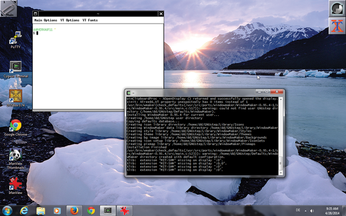

Then you reconfigure your display manager to start multiple instances, each using a different ServerLayout. X knows nothing about your chair - so multiseat (AFAIK) refers to a session running on a different tty. For the 1st X server with the 1st keyboard: startx - /usr/X11R6/bin/X0 :0. a command line tty and a terminal you would open within an X session tty. The only way to get multiple accelerated X sessions is to use Nvidias. I'd love to see this documented somewhere.This has nothing to do with the desktop environment you are going to use an this answer remains valid.īasically you need to gather the names Xorg uses/gives your devices and monitors, then you combine devices and monitors to "seats". Namely a mult-session configuration that sees a greeter displayed on vt7 and vt8 (and/or more vts) after boot. I've tried with gamescope too, but I can't seem to get that to work right. The closest I've ever gotten is with nested xorg, but it doesn't support vulkan correctly from what I've seen. However, you can run the second X session on screen 1, the third on screen 2, and so on. By default the first X session runs on screen 0. MULTISEAT1 tries to autodetect if an LTSP client has two graphics cards and to automatically split them along with the USB ports into two seats. Provide your login details and type the following command to start X session: startx - :1. Switch to console mode by pressing CTRL+ALT+F1. Configure Openbox Set X to launch on login - echo exec startx > /.profile Set openbox as default session - echo exec openbox-session >. The X server configuration determines how the display will be. From there, you need to run the command to start a window manager (e.g. startx -display :2 - :2 vtn & You will then get a small white terminal window on that TTY that you can move your mouse in. I've tried disabling GDM and just using startx on different TTY. You can use the same to run multiple X session. An X server manages a number of devices: keyboards, pointing devices, video cards, and monitors. Assuming n is the TTY number that you want to start the X server on, the command is. I can theoretically capture the output of DISPLAY :1 with obs, but obs says the display is always black while there. I can run a different X session by executing 'startx - :1', but I have trouble capturing what happens on this display. But the documentation on configurations is so meagre I cannot divine how we might configure lightdm to produce the outcome that that lies between these solutions. I've tried a lot of different things from using using a separate X Server to just switching users. Hi, I am trying to capture the output of a program and send commands to it automatically, in the background. There must be a multi-session solution as well given we see that "switch user" produces this very outcome.

This is shown clearly as two sessions on one seat by dm-tool.Īnd I also know I'm not alone in wanting to see this greeter on vt8 after boot without having to switch user as others are asking and posting solutions:īut these solutions all propose one seat per vt (a multi-seat solution). Now I know that I have a default session on vt7 and that I can switch user and this opens a new greeter on vt8. The special argument '-' marks the end of client arguments and the beginning of server options. Arguments immediately following the startx command are used to start a client in the same manner as xinit (1). Better said, I can't find any such documentation. The startx script is a front end to xinit that provides a somewhat nicer user interface for running a single session of the X Window System.


 0 kommentar(er)
0 kommentar(er)
